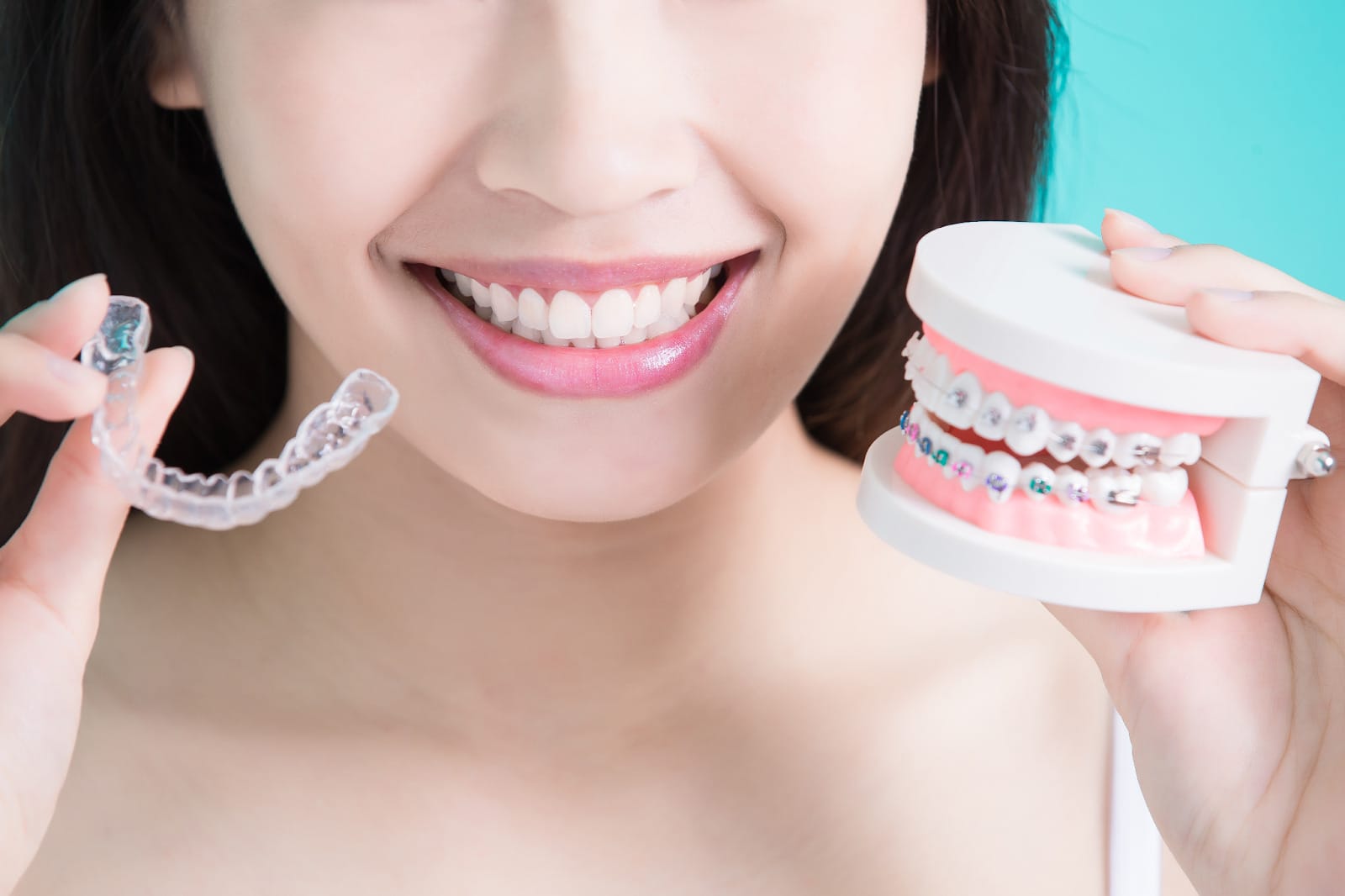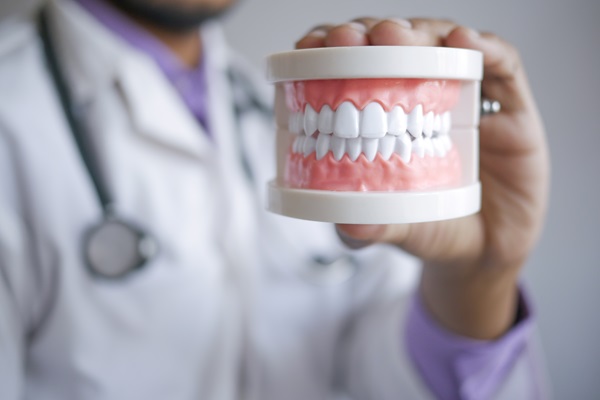Smiles are universally cherished as symbols of happiness, but achieving an aligned smile is a uniquely personal journey. Choosing between braces and Invisalign is more than just a decision; it’s an exploration of your individuality. Both these options come with their own distinct advantages and considerations, and only by carefully weighing these factors can you select the one that aligns with your lifestyle and personal preferences.
What are Braces?
Braces are orthodontic devices designed to correct the alignment and positioning of your teeth. They work by gently applying pressure to move your teeth into their proper positions, giving you a straighter and more attractive smile. While traditional metal braces are the most common, there are various other types of braces available, including ceramic braces that are less noticeable, lingual braces that hide behind the teeth, and self-ligating braces, which offer a more streamlined approach.
What is Invisalign?
Invisalign represents a revolutionary approach to orthodontics, offering a discreet and flexible way to achieve a straight and harmonious smile. Unlike traditional braces, which rely on visible brackets and wires, Invisalign utilises a series of clear, custom-made aligners that fit snugly over your teeth. These aligners are crafted from a special, transparent plastic material, making them virtually invisible when you wear them.
Advantages of Braces
The remarkable versatility and reliability of braces have made them a time-tested solution for correcting a wide array of orthodontic issues. Their benefits include:
Suitable for Mild to Complex Cases
Traditional braces help address not only mild concerns but also complex issues such as severe crowding, overbites, underbites, and intricate misalignments. They use brackets and archwires to guide each tooth into its intended position. This level of control allows dentists to tackle a wide spectrum of dental challenges, making traditional braces a versatile choice for individuals with varying degrees of orthodontic needs.
No Compliance Required
Braces offer the invaluable advantage of being fixed in place. Unlike alternative treatments like Invisalign, where patient compliance is essential for success, braces stay put, diligently working round the clock. This characteristic is particularly beneficial for children and those who may find it challenging to follow strict guidelines. With braces, there’s no need to worry about remembering to wear or remove them, providing a hassle-free treatment approach.
Durability
Braces are sturdy and durable, making them less prone to damage compared to clear aligners. They can withstand a wide range of dietary choices. This durability ensures that your orthodontic treatment remains steady and reliable throughout the entire process, making it an excellent choice for individuals with active lifestyles or diverse culinary preferences.
Functional Corrections
Misaligned teeth and jaws can lead to various oral health concerns, such as difficulty chewing, speaking, or maintaining proper oral hygiene. Traditional braces not only straighten your teeth but also ensure that your bite aligns correctly, contributing to improved oral function. This dual-purpose approach provides comprehensive benefits, ensuring that your smile not only looks great but also functions optimally.
Disadvantages of Braces
While traditional braces offer numerous benefits, it’s essential to consider their disadvantages to make an informed choice for your orthodontic journey:
Aesthetic Concerns
The most apparent drawback of traditional braces is their visibility. The metal brackets and wires are quite noticeable, drawing unnecessary attention to your teeth. While some individuals embrace their braces as a unique part of their journey, for others, the aesthetic aspect can be a significant concern during treatment.
Discomfort and Irritation
Braces can cause discomfort and soreness, especially after adjustments. The metal components may rub against the cheeks, lips, and tongue, leading to irritation. Orthodontic wax can help alleviate some of this discomfort.
Oral Hygiene Challenges
Maintaining good oral hygiene with braces can be challenging. Food particles can get trapped around the brackets and wires, increasing the risk of cavities and gum problems. Special care and tools like orthodontic toothbrushes, floss threaders and interdental brushes are often needed to clean between the brackets and wires.
Regular Visits to the Dentist
Braces necessitate frequent visits to the dentist for adjustments and checkups. This can be inconvenient for individuals with busy schedules or those who live far from their dentist’s office.
Dietary Restrictions
While braces are durable, there are certain dietary restrictions. Foods that are too hard, sticky, or chewy can damage the brackets and wires. As such, you may need to avoid some of your favourite treats during treatment.
Advantages of Invisalign
Invisalign, with its innovative design and remarkable benefits, has revolutionised the path to achieving beautifully straight smiles, making it a top choice for those seeking a discreet and convenient orthodontic solution:
Aesthetic Appeal
Invisalign aligners are made of clear, transparent plastic, making them virtually undetectable when worn. This aesthetic advantage particularly appeals to those who prefer a discreet orthodontic treatment. You can straighten your teeth without the noticeable appearance of traditional braces.
Removability
Invisalign aligners are removable, allowing you to take them out for eating, drinking, brushing, and flossing. This convenience means there are no dietary restrictions, and maintaining oral hygiene is straightforward.
Fewer Orthodontic Appointments
Invisalign clear aligners generally require fewer orthodontic appointments compared to traditional braces. You receive multiple sets of aligners at once and change them at home every two weeks. This means fewer trips to the dentist’s office and less time away from your daily activities.
Comfort
Invisalign aligners are custom-made to fit comfortably over your teeth with no sharp or protruding edges. They don’t involve the use of metal wires or brackets, reducing the risk of oral irritation and sore spots commonly associated with traditional braces.
Disadvantages of Invisalign
Invisalign, with its many advantages, is undoubtedly a popular orthodontic solution. However, it’s important to understand that, like any treatment, it has some limitations and drawbacks:
Compliance Requirements
One of the key challenges with Invisalign is the need for strict compliance. To achieve the desired results, you must wear the aligners for 22 hours daily. This means they should only be removed for eating, drinking, brushing, and flossing. Forgetfulness or a lack of discipline in wearing the aligners as prescribed can lead to prolonged treatment duration and potentially less successful outcomes.
Limitations for Correcting Complex Cases
While Invisalign is highly versatile and can address a broad range of orthodontic concerns, it may have limitations when dealing with extremely complex cases. Issues involving severe bite problems or extensive tooth rotations can be better managed with traditional braces, which offer greater control over tooth movement. If your orthodontic concerns are particularly intricate, your dentist may recommend an alternative treatment plan.
Potential Discomfort
Invisalign aligners may cause discomfort, especially during the initial stages of wearing a new set. Some individuals may experience mild pressure or soreness, although this typically subsides as the teeth adjust to the aligners.
Cost Considerations
The expense of Invisalign treatment can vary depending on several factors. While in some cases, the cost of Invisalign aligns closely with that of traditional braces, in others, it may be higher. The intricacy of your case and the length of your treatment play a critical role in determining the final cost. Therefore, it’s essential to engage in an open discussion with your dentist regarding pricing and available financing options to ensure that Invisalign aligns harmoniously with your budget and personal preferences.
Check out this related article: Why Orthodontic Treatment is Never Too Late for Adults
Braces vs Invisalign: Making the Right Decision
At Bellevue Hill Dental, we believe the journey to a healthier and more beautiful smile is a highly personalised one. Understanding the importance of this decision, our dedicated team takes the time to listen, assess, and align your smile goals with a treatment plan tailored specifically to you. Whether you’re exploring orthodontic options like braces or Invisalign or considering any other aesthetic or corrective dental procedure, we are here to guide you at every step of your oral care journey. Your unique smile and oral health needs are at the heart of our recommendations, ensuring your newfound smile completely resonates with your individuality.




